Andalusite – Mineral Properties, Photos and Occurrence
Andalusite is a common aluminosilicate, which is very important for metamorphic petrology and ceramic industry. Despite its lack of perfect gemmy crystals, it can form outstanding specimens and rarely also faceted gemstones.
Crystal Structure of Andalusite
Andalusite is one of the polymorphs with the chemical formula Al2SiO5 (the other two being kyanite and sillimanite). Andalusite belongs to the nesosilicates and crystallizes in orthorhombic system. Most often, it occurs as columnar crystals with a squared cross-section. Less often, it is prismatic, blocky, radiating or grainy.
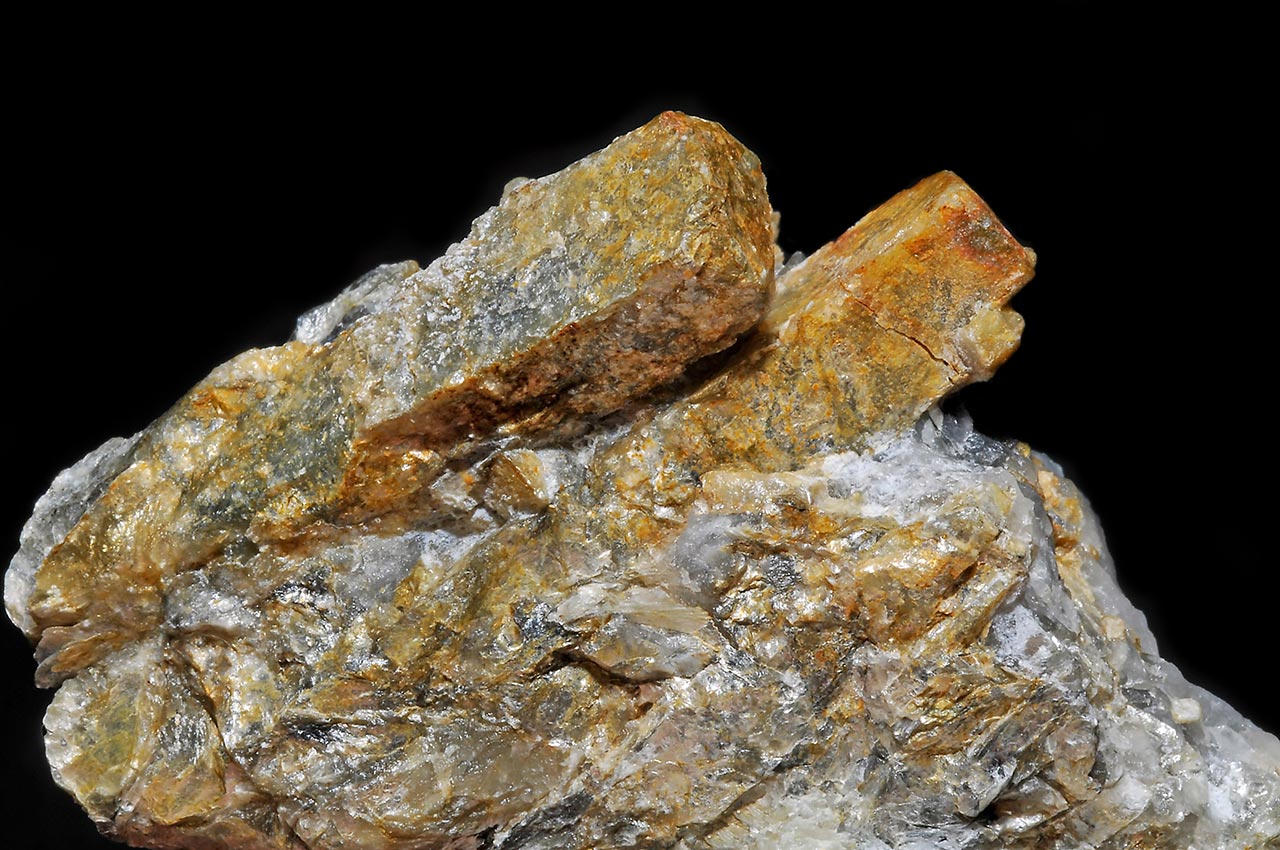
Sometimes, andalusite forms special form of prismatic crystals with black cross visible on the cross section. Rarely, the pattern is more complex parquetting. This variety is called chiastolite, with inner black cross made of graphite. Chiastolite is very popular mineral for Christian jewelry.
Andalusite forms a solid solution series with rare kanonaite Mn3+AlSiO5, where one aluminum atom is replaced by trivalent manganese. Manganoan andalusite variety is sometimes called viridine. Unlike true kanonaite, viridine is bright green instead of dark greenish black. Andalusite structure also readily accepts small amounts of Fe3+ and Ti.

Andalusite crystals can reach over 50 cm in size. Unfortunately, they are never formed inside a crystal pockets, so crystal faces are usually rough and edges blunt. Andalusite is often partially or fully altered (replaced) by other minerals: Weak alteration can be observed as thin coatings of fine pale mica on the andalusite surface. Strong alteration usually means full replacement of former andalusite by a new mineral: pseudomorphs of muscovite, kyanite or pyrophyllite occur at many localities.
Physical Properties of Andalusite
Andalusite offers a variety of muted colors (pink, salmon-red, pale brown, green, yellow or white) that reflect an iridescent quality, where the surface changes color depending on the angle at which it is viewed or illuminated. Inclusions can render the specimen opaque. In thin section under polarization, the most distinctive color is pink.
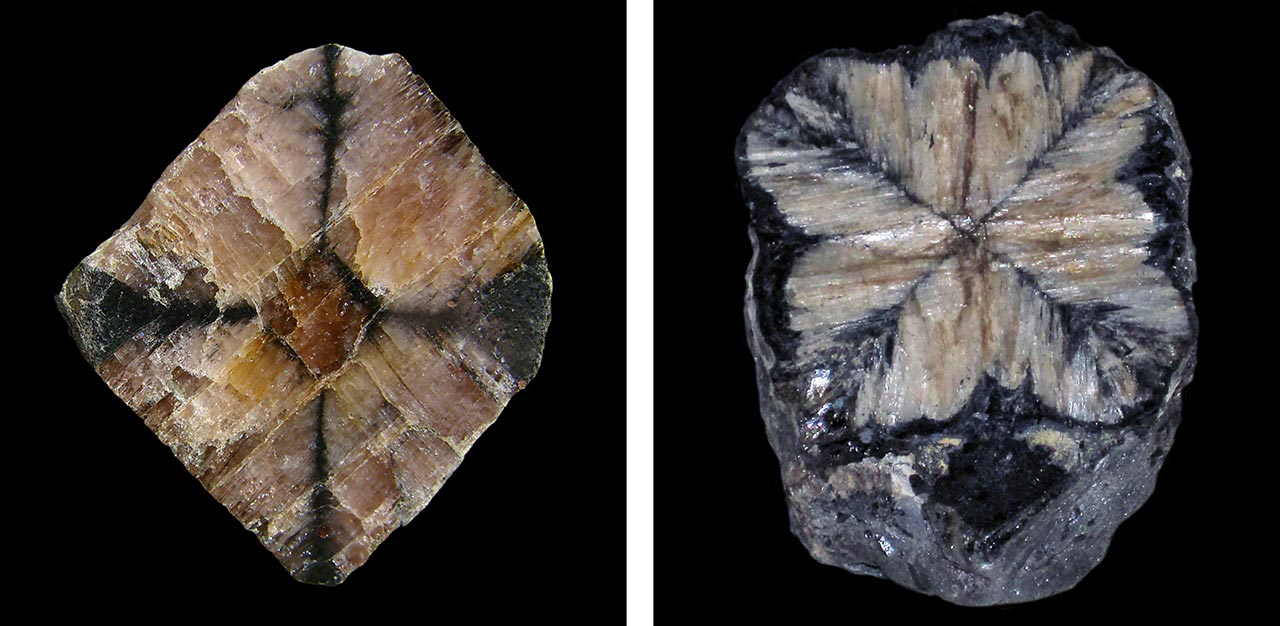
Andalusite is strongly pleochroic (actually trichroic), as are kyanite and sillimanite. Pleochroism is the property of exhibiting a distinct color based on the observation angle, particularly in polarized light; minerals with 2 optic axes (such as the Al2SiO5 aluminosilicates) can exhibit 3 shades of pleochroism (trichroism).
Its fracture pattern is uneven or partially conchoidal. Andalusite cleavage varies from good to poor and its Luster is vitreous. Andalusite hardness is 6.5-7.5, with a white streak and a density of 3.1-3.2.
Similar minerals
Andalusite is usually not associated with minerals of the same appearance. Tricky situation might be with elongated crystals of brown staurolite. They can occur together, and both produce imperfect crystals in mica/staurolite schists. Vesuviane in quartz might sometimes look like brown or greenish-brown andalusite and it has square cross-section too. Vivid green viridine can look like common green beryl or green apatite.
Naming and Discovery
Andalusite takes its name from specimens collected in 1789 in the Ronda Massif, near Malaga, Andalusia, southwestern Spain, but sources indicate that it was described earlier from a massif much further north, at El Cardoso de la Sierra, in Guadalajara Province.

Andalusite Origin
Andalusite is a typical mineral of aluminum rich rocks, where it forms under low pressure and low to high temperature conditions. Source rocks are typically represented by various schists or some granites and pegmatites. Andalusite is also common in some types of contact metamorphic rocks.
Andalusite is often present in metamorphic rocks within a quartz lenses, where it forms columnar pink crystals. Contact metamorphism is a source of the famous chiastolite crystals.
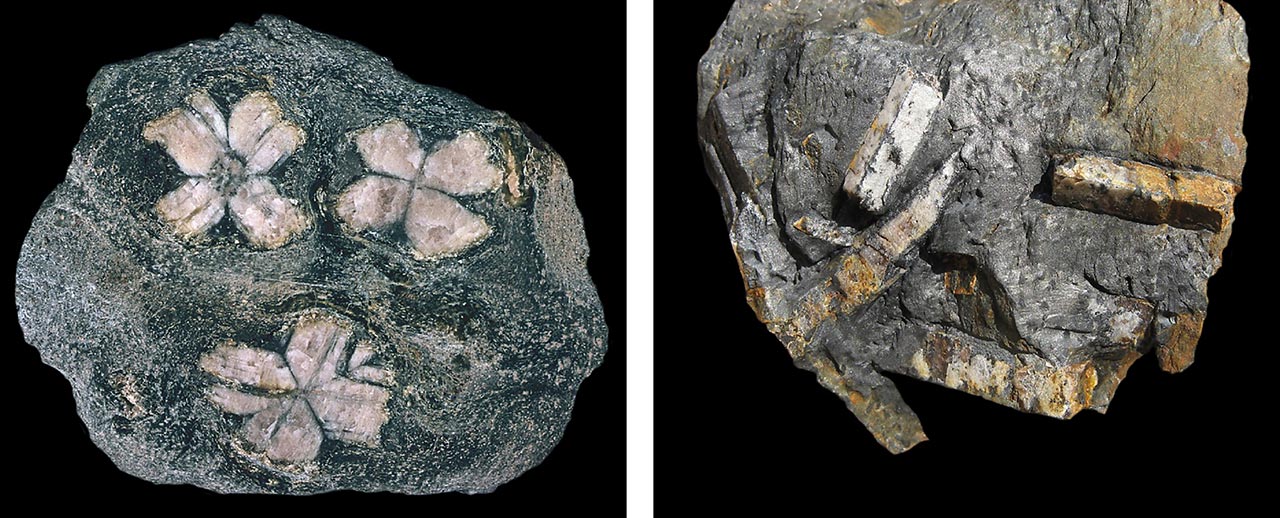
Despite different pressure-temperature conditions of their formation, Al2SiO5 polymorphs can occur together. Usually only two of them but also all three are present at certain localities.
Associated Minerals
Andalusite typically occurs in various schists. It is associated with quartz, K-feldspar, muscovite, biotite and less often also kyanite, sillimanite, cordierite, staurolite and black tourmaline (usually schorl/dravite).
Some andalusites in extremely Al-rich pegmatites contain grains of blue corundum and can be associated with diaspore.
Applications
Andalusite, when naturally altered to clay, is a resource for mullite (Al6Si2O13). It is highly valued for its compatibility for use in manufacturing refractory bricks used in ferrous metallurgy. As a precursor for mullite, andalusite provides 3 specific advantages:
- It is free of water.
- Prismatic crystals of andalusite are a perfect size for immediate use.
- Andalusite transforms into mullite at a slow, steady rate.
Andalusite (and the two other aluminosilicates) can convert to mullite and vitreous silica by the following reaction, which yields 88% mullite and 12% free silica (cristoballite):
3 Al2SiO5 → 3 Al6Si2O13 + SiO2
Mullite (Al6Si2O13 or 3Al2O3.2SiO2) is exceptionally valuable as a refractory because:
- It is more resistant to rupture and volume changes.
- It is stable over a greater temperature range.
- It is 3 times more durable than most refractory materials.
- It resists salt corrosion and spalling.
South Africa has been a leading producer of andalusite/mullite, based in large part on the large volume of waste rock available from mine dumps in the metamorphic aureole surrounding the Bushveld Complex, which has been mined for decades.
The high natural cost of mullite derived from South African andalusite, Indian kyanite and sillimanite has actually limited its use, even though it is a superior refractory material. To counteract the natural shortage driven by supply costs, the US has developed a production capacity of synthetic mullite amounting to over 22,000 tons annually, which satisfies 80% of US requirements.
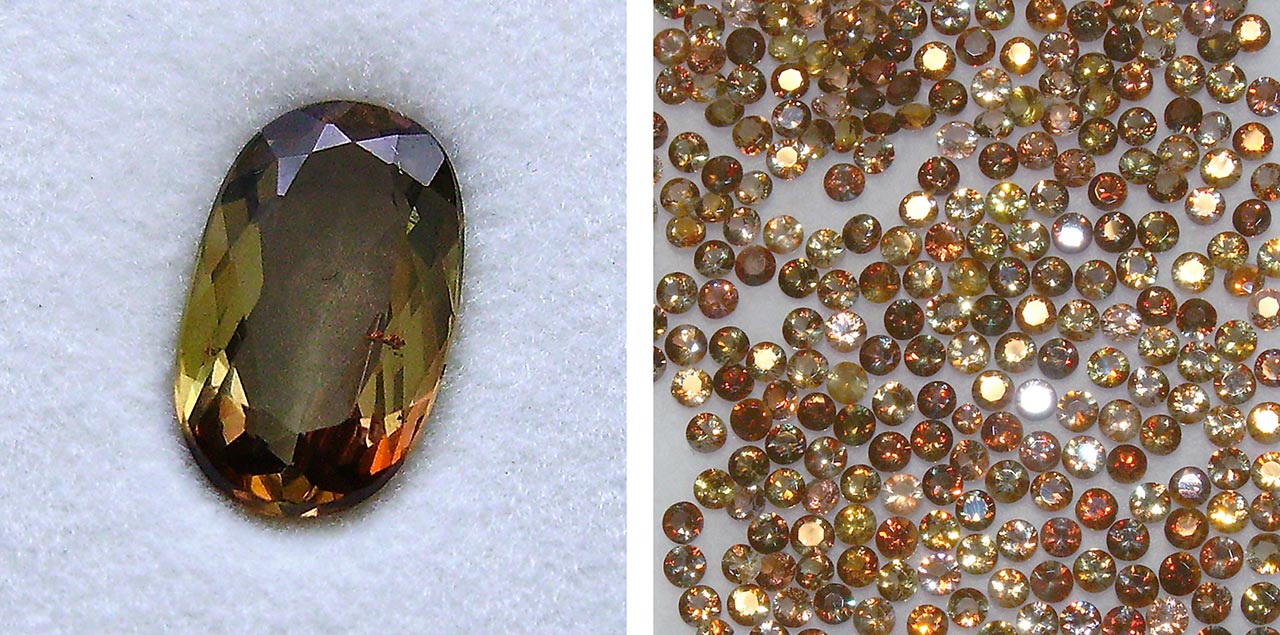
There are few other practical uses of andalusite except as jewelry. The chiastolite variety is suitable for Christian symbolism and it is quite popular among metaphysical crowd too. A transparent gemmy andalusite can be faceted, resulting in strong red, yellow and green trichroism.
Andalusite is also used in petrology as a very important mineral to identify P-T (pressure-temperature) conditions. The Al2SiO5 polymorphs (andalusite-kyanite-sillimanite) are very common in aluminum rich metamorphic rocks. Their presence – together with occurrence of muscovite, garnet and some other minerals – can identify P-T conditions when these rocks formed.
Occurrence of Andalusite
Chiastolite is the specimen variety most sought after. Prime examples occur in the following regions: Well-formed chiastolites are found in Boal area, Asturias, Spain and Carreco, Viana do Castelo, Portugal. Large chiastolite specimens come from Sangping Mine, Nanyang Henan Province, China and Mount Howden, Olary Province, South Australia.
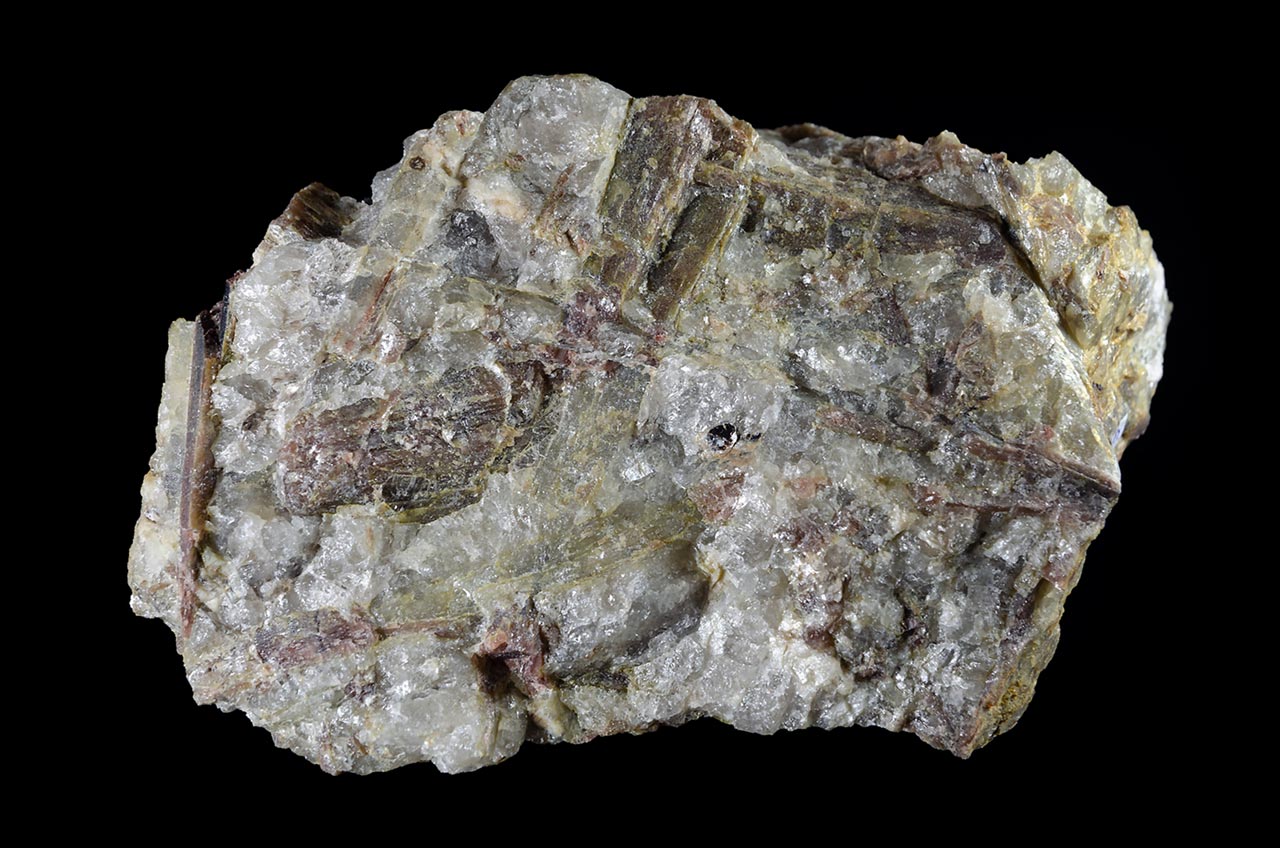
Nicely shaped and large crystals are found around Lüsens (Lisens), Sellrain Valley, North Tyrol, Austria. Very nice sharp and large crystals come from Chiavenna and Bregaglia Valleys, Sondro Province, Lombardy, Italy. Elongated andalusite in dark shales comes from Les salles de Rohan, Sainte Brigitte, Brittany, France. Nicely shaped cinnamon to pink crystals were found in Seskinnamadra, Carlow Co., Ireland. Andalusite in pegmatites forms quite huge crystals and aggregates in Čejov and Dolní Bory, Czech Republic. Nice andalusite crystals in metamorphic rocks come from Šumava and Jeseníky Mts., Czech Republic.
Bright green viridine is found in Thier del Preu quarry, Lienne valley, Petit-Sart, Belgium and kanonaite with viridine or andalusite comes from Le Coreux, Salmchâteau, Luxembourg Province, Belgium.
Bright viridine crystals were found at Recruta Farm, Vitória da Conquista, Bahía, Brazil. Pebbles of gemmy and sometimes green andalusite are found in placers on several places in Bahía province. Gemmy or transparent andalusite crystals occur also around Santa Teresa, Espírito Santo and Santa Maria, Cruzeiro Novo, Minas Geraís – both in Brazil. Brown, cinnamon or salmon-pink crystals are also found in Jequitinhonha Valley, Minas Geraís, Brazil.
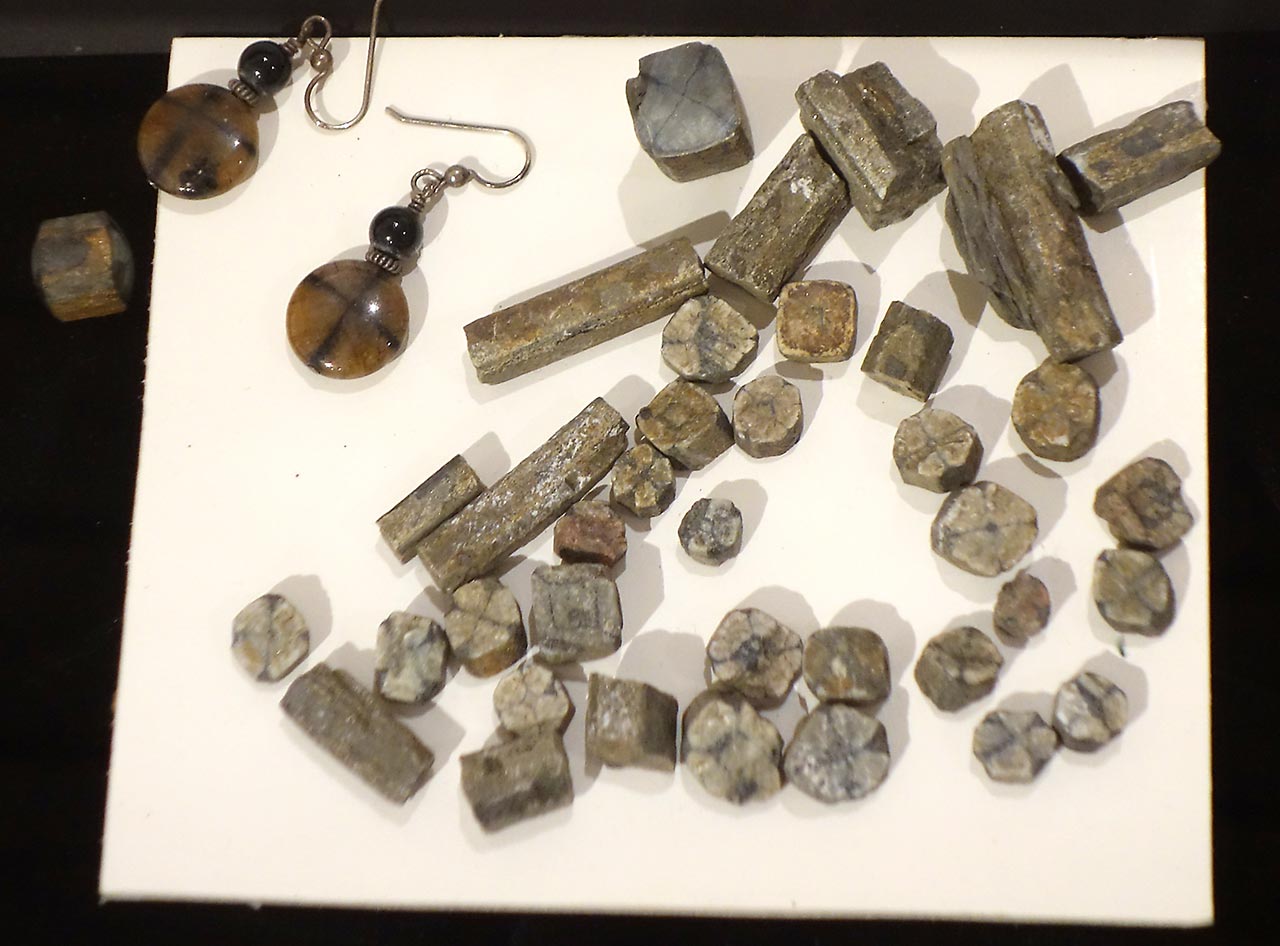
Numerous localities are spread around the US: Nicely shaped crystals in soft rocks occurs in American Girl Mine, Obregon, Imperial Co., California. Notable white or pink andalusites were found around Champion Mine, White Mountain, Laws, Inyo County and Chowchilla, Madera County – both in California. Very nice chiastolite comes from Lancaster area, Worcester County, Massachusetts. Large crystals were found in Hill City area, Pennington County, South Dakota and Alta Vista, Campbell County, Virginia.





Comments